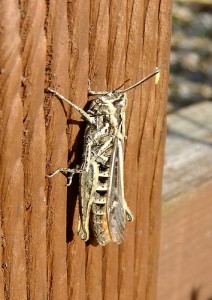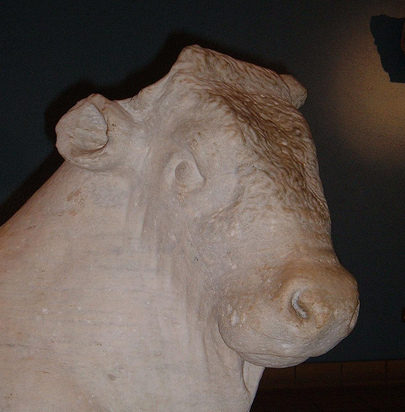I don’t recall as a child ever seeing a grasshopper or cricket except for some locusts in the school science lab. Like most nature I assumed I didn’t live in the right place, or that these things were too scarce, too shy, or hard to find. I’ve always been useless at spotting birds, even when pointed out to me. Trailing my own children round the countryside and waste ground round Sandy and trying to find where in the grass some insect noises were actually coming from, I discovered that these things are not that hard to find. Grasshoppers and crickets (orthoptera) are actually quite common, distinctive, relatively large, and also very inclined to stay still, which makes photography a hell of a lot easier. Although common, there are not that many species (36 breeding species*) in the UK, so identifying them is not impossibly difficult.
That said, grasshoppers are problematic to identify as the differences between species can be subtle (e,g. shape of the pronotum behind their head, wing length, bulges on wings, and the shape of the antennae), even with a decent photograph. However, I have started submitting records to the Orthoptera & Allied Insects Recording Scheme. I like schemes like this as it means I can contribute something to SCIENCE (especially in view of climate change which seems to be having real effects as some crickets in particular are quickly spreading north) while also getting expert confirmation of my identifications.
After getting the bug** in 2011, I was really looking forward to summer 2012 as I knew the good sites around Sandy and had a good idea what I was looking for. I was also hoping that I might know how my camera works by now. However, 2012 was a notoriously bad year for insects. I don’t think grasshoppers are in quite the same bad situation as they don’t feed on nectar like butterflies and bees, but I didn’t see too many, possibly more due to the rain stopping me going out to look for them as much as I would have liked. I did get loads of pictures of young grasshoppers (nymphs) so they must have been around.
I only saw two confirmed species of grasshopper. The first two pictures below are confirmed by the recording scheme. All photos were taken in Sandy, Bedfordshire.
Meadow grasshopper (Chorthippus parallelus)

This is a relatively distinctive grasshopper, although don’t ask me to explain why (parallel pronotal keels and short wings are a start). The ones I’ve seen have all had the good manners to be green which this species tends to be: grasshoppers have a tendency to be all kinds of colours, even pink (photo by buzzbee4826). This one has the misfortune to only have five legs, which seems to be a relatively common affliction.
More on this at the Orthoptera & Allied Insects site and Wikipedia.
Field grasshopper (Chorthippus brunneus)

This seems to be the most common grasshopper in Sandy. When I think I’ve found something a bit different it normally turns out to be one of these. If nothing else, its wings are generally longer than the meadow grasshopper and the colours are normally all over the shop, none of which helps with identifying the nymphs. However, this photo was confirmed by an expert. The other photo is an adult, on a fencepost next to some vegetation growing over a path a stone’s throw from the house. Once you start looking for these things they turn up all over the place.
More on this at the Orthoptera & Allied Insects site and Wikipedia (although not a lot more).

* Evans and Edmondson. A photographic guide to the grasshoppers & crickets of Britain & Ireland. 2007. p. 7.
** LOL!!!
